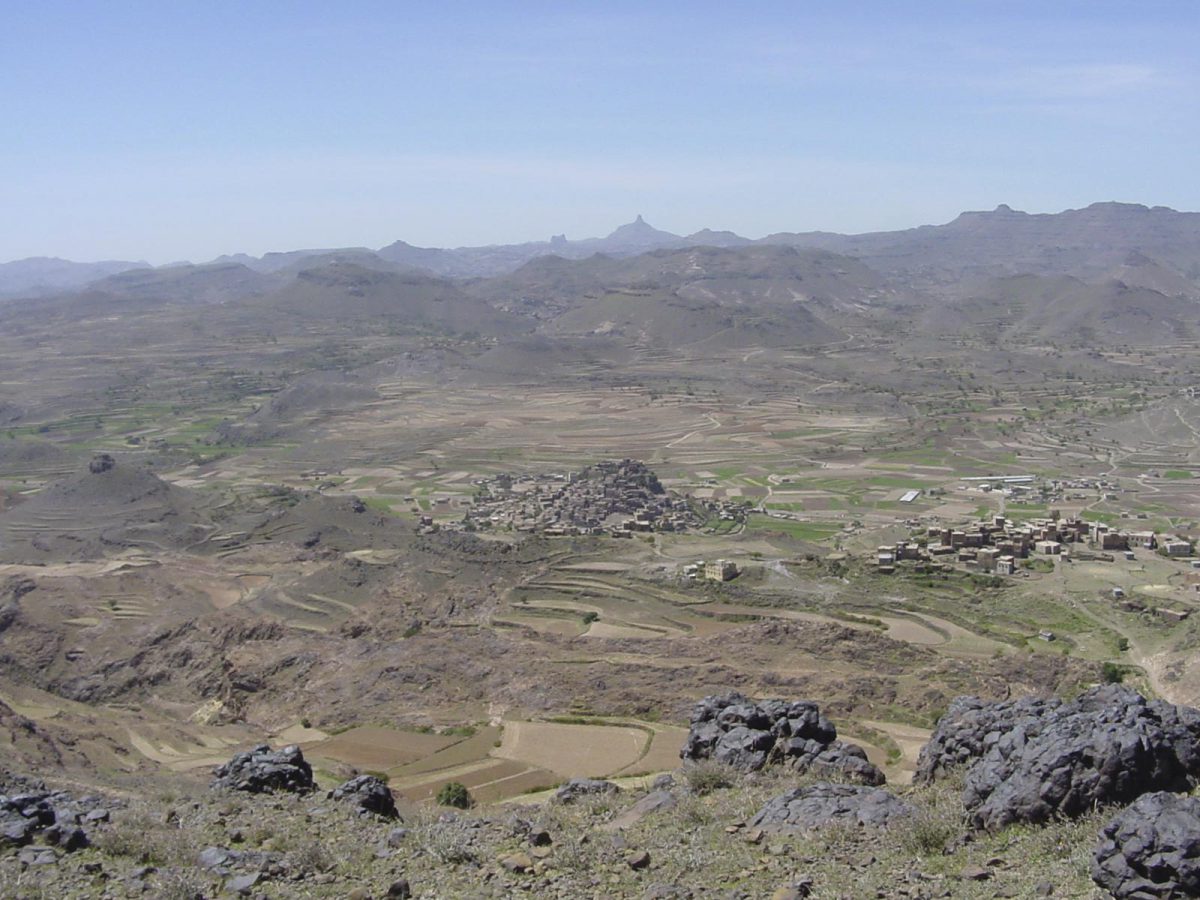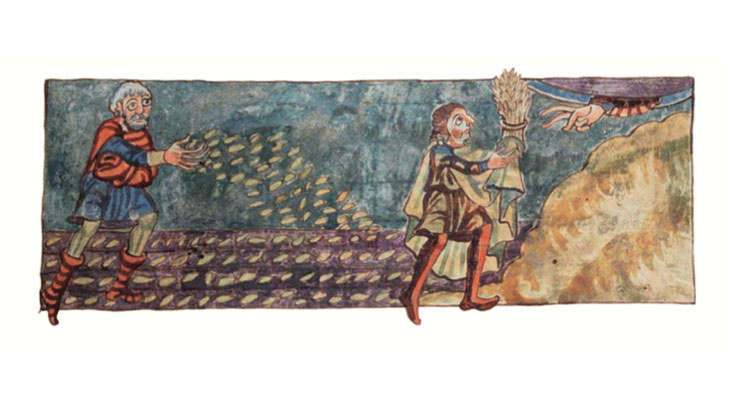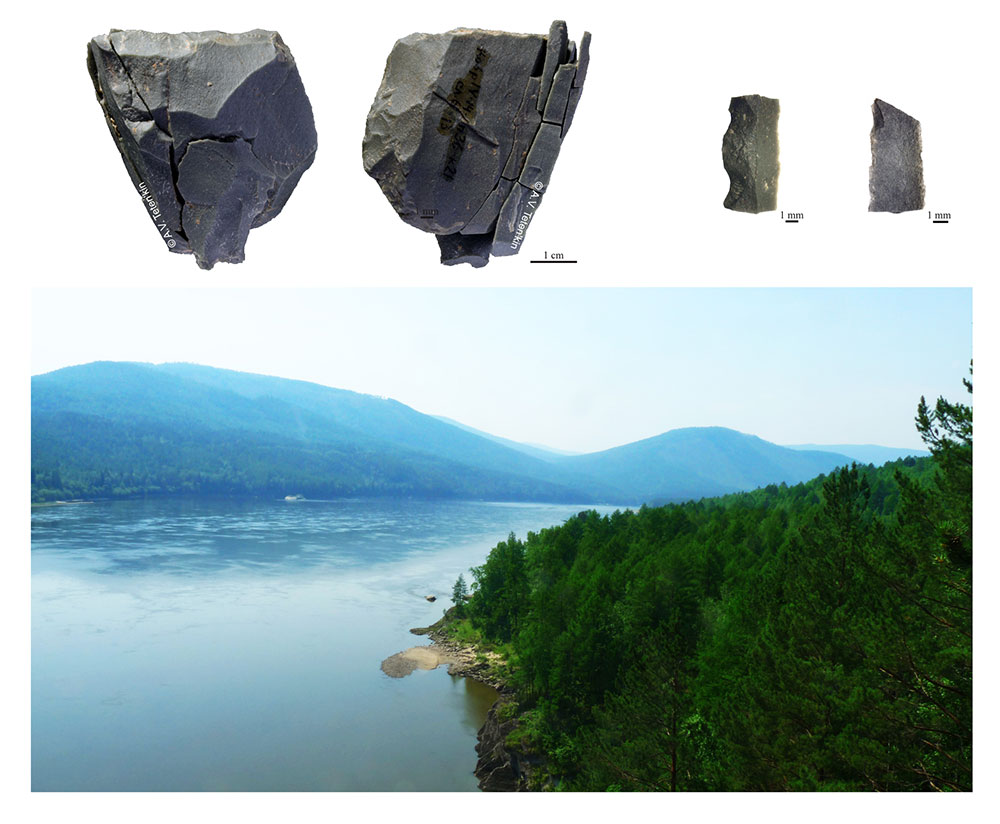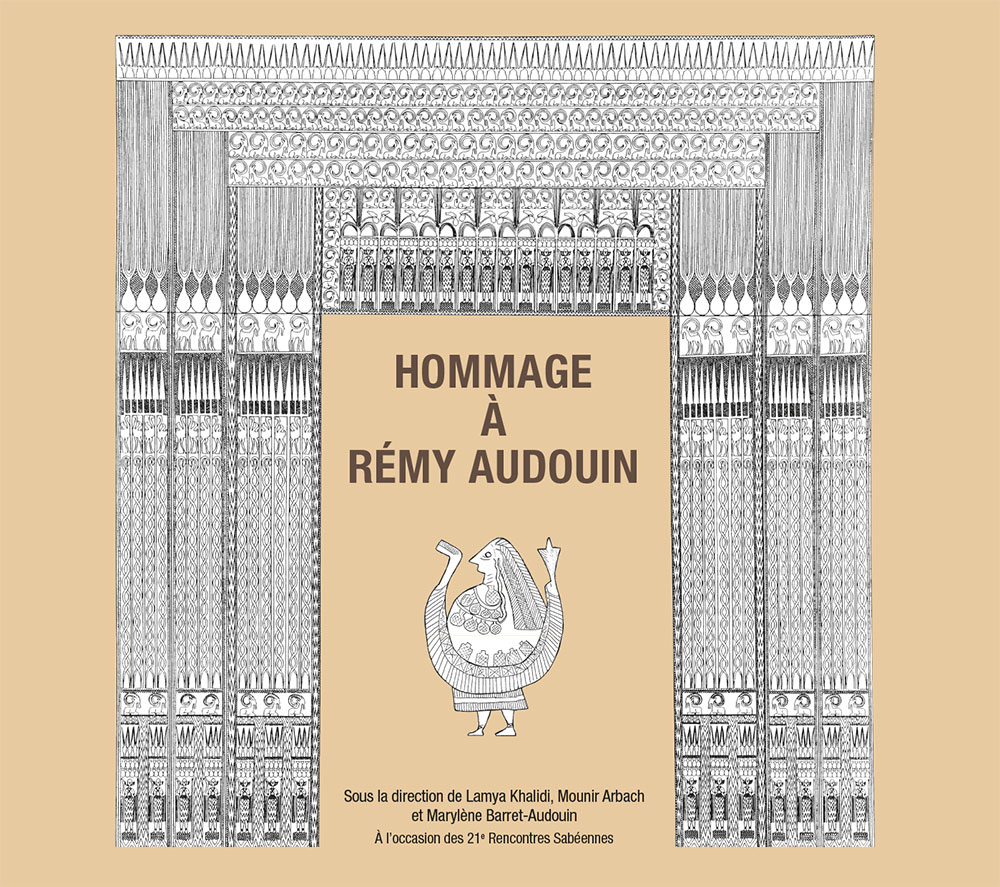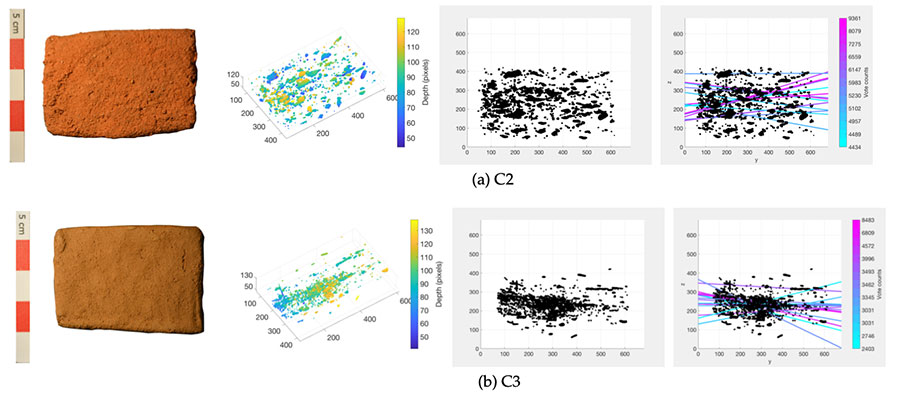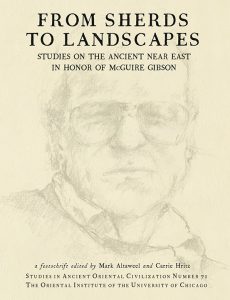 Since at least the 1970s, McGuire Gibson recognized the unique potential for archaeological research in highland Yemen to reveal key insights into Arabian prehistory. At that time, southwest Arabia was considered by most to be peripheral to cultural developments in better-known parts of the early ancient Near East. A series of research projects in the region have since shown that Gibson’s early assessment was astute. This chapter briefly reviews the current state of research on the prehistory and paleoecology of highland Yemen, with special attention to the contributions of the Dhamar Survey Project, which was cofounded by McGuire Gibson and Tony Wilkinson. We then situate the evidence for prehistoric highland Yemen in the context of contemporary research questions across Arabia and the wider region.
Since at least the 1970s, McGuire Gibson recognized the unique potential for archaeological research in highland Yemen to reveal key insights into Arabian prehistory. At that time, southwest Arabia was considered by most to be peripheral to cultural developments in better-known parts of the early ancient Near East. A series of research projects in the region have since shown that Gibson’s early assessment was astute. This chapter briefly reviews the current state of research on the prehistory and paleoecology of highland Yemen, with special attention to the contributions of the Dhamar Survey Project, which was cofounded by McGuire Gibson and Tony Wilkinson. We then situate the evidence for prehistoric highland Yemen in the context of contemporary research questions across Arabia and the wider region.
Typologie d'actualités : Publications
Article | Holocene East African monsoonal variations recorded in wave-dominated clastic paleo-shorelines of Lake Abhe, Central Afar region (Ethiopia & Djibouti)
Source : https://doi.org/10.1016/j.geomorph.2021.107896
Abstract
In tropical Africa, Late Pleistocene-Holocene climatic fluctuations heavily impacted the continental hydro-systems. The timing and magnitude of ‘African Humid Period’ hydrological dynamics (AHP; ~14.8 to ~5.5 ka BP) are not yet fully understood due to the extreme variability in African geomorphic patterns and the complex network of past air convergence boundary shifts. The investigation of the functioning of specific hydro-sedimentary basins is needed to improve our knowledge on the AHP spatial and chronological patterns over the continent. In this paper we present a revised Holocene lake level curve of Lake Abhe: an endorheic basin situated in the Afar Depression at the northern extremity of the East African Rift System (EARS). Located at the boundary of the Red Sea and the Indian and Atlantic Oceans’ air moisture mass fluxes, the Lake Abhe watershed represents a system sensitive to changes in Northeast African hydro-climate. Based on numerous littoral lacustrine geomorphic features and 53 related radiocarbon ages on stromatolites and nearshore deposits, we have defined the main Holocene lake highstands proposing a detailed paleo-shoreline record. The first rise in water level is dated to ~11.1 ka cal. BP, while the Maximal Holocene Highstand Shoreline (~420 m a.s.l.) was rapidly reached around ~10 ka cal. BP. Evidence of the impact of the 8.2 ka North Atlantic cooling event is recognized with slow lake level regression until ~8.3 ka cal. BP and with an abrupt drop at ~8 ka cal. BP. The resurgence of humid conditions was recorded from ~7.7 ka cal. BP to ~4.6 ka cal. BP. Radiocarbon ages on littoral materials allow us to propose a Holocene subsidence rate of the Abhe basin axial valley. Furthermore, multiphase sill overflow incisions towards the downstream Hanle basin and transient fluvial connectivity with the upstream Ziway-Shala basin, indicate strong geomorphic controls on lake highstand elevations. In summary, Lake Abhe Holocene fluctuations are the result of combined hydro-climatic, tectonic and local geomorphic controls. However, the confrontation with others East African basins allows us to discuss the transport of moisture masses dynamics into the northern EARS during the Holocene.
Article | Sedimentary processes and palaeoenvironments from La Combette sequence (southeastern France): climatic insights on the Last Interglacial/Glacial transition
Source : https://doi.org/10.1016/j.palaeo.2021.110503
Abstract
During the Last Interglacial-Early Glacial transition (MIS5-MIS4; ~73 ka), substantial hydroclimatic changes affected morphogenetic processes, landformdynamics, and ecosystem variability over the Mediterranean sub-alpine valleys. This transition is mainly preserved in the northern Mediterranean region in continuous marine, lacustrine, and peat bog archives. To understand better local-to-regional hydro-sedimentary processes, their climatic significance, and their direct impact on prehistoric settlements, this manuscript reinvestigates a known continental sedimentary record with revised methods. The Middle Palaeolithic site of La Combette in the western Provence region (southeastern France) presents a thick sedimentary key sequence for studying environmental changes from the MIS5 to the MIS3. A review of previous studies with the integration of new micromorphological, sedimentological, physicochemical, malacological, and luminescence ages allows us to characterize the sedimentary processes and environmental patterns during this major climatic transition. Alternating warm and cold conditions and shifting vegetation patterns reflect the strong environmental instability of the end of the Last Interglacial Period. The emergence of a steppe-like ecology dominated by cryo-turbated loess deposition marks the beginning of the Early Würmian Glacial period (MIS4-MIS3; ~73 ka to ~50 ka), contemporaneous with the last Neanderthal occupation at La Combette rock shelter. Comparisons with regional palaeoclimatic data allow us to detail local climatic settings and provide evidence of divergences with larger-scale quantitative reconstructions during a period of significant environmental and socio-cultural shifts.
Article | Co-variations of climate and silicate weathering in the Nile Basin during the Late Pleistocene
Source : https://doi.org/10.1016/j.quascirev.2021.107012
We have investigated provenance and weathering proxies of the clay-size sediment exported from the Nile River basin over the last 110,000 years. Using neodymium isotope composition of sediments from both the Nile Deep Sea-Fan and Lake Tana, we show that the Nile River branches draining the Ethiopian Highlands have remained the main contributors of clays to the Nile delta during the Late Quaternary. We demonstrate that fluctuations of clay-size particle contribution to the Nile Delta are mainly driven by orbital precession cycle, which controls summer insolation and consequently the African monsoon intensity changes. Our results indicate that – over the last 110,000 years – the proportion of clays coming from Ethiopian Traps fluctuates accordingly to the intensity of the last 5 precession cycles (MIS 5 to MIS 1). However, there is a threshold effect in the transport efficiency during the lowest insolation minima (arid periods), in particular during the MIS3. Several arid events corresponding to the Heinrich Stadial periods are associated with small or negligible clay source changes while chemical weathering proxies, such as δ7Li, Mg/Ti and K/Ti, vary significantly. This suggests a straightforward control of weathering by hydro-climate changes over centennial to millennial timescales. Our data also suggests a significant but more progressive influence of the temperature decrease between 110kyr and 20kyr. Taken altogether, the observed tight coupling between past climate variations and silicate weathering proxies leads us to conclude that precipitation changes in northeast Africa can impact soil development over a few hundred years only, while the influence of temperature appears more gradual.
Ouvrage | Les déserts de l’Occident. Genèse des lieux monastiques dans le sud-est de la Gaule (fin IVe – milieu VIe siècle)
Source : http://www.brepols.net/Pages/ShowProduct.aspx?prod_id=IS-9782503592725-1
Le monachisme rhodanien : une tradition majeure pour la formation des monastères occidentaux comme espaces sacrés.
Au cours du ve siècle, dans le sud-est de la Gaule, plusieurs ascètes entreprennent d’aménager des lieux monastiques sur des îles : à Lérins, Porquerolles, l’Ile-Barbe, la Cappe. Définissant ces établissements insulaires comme des déserts, ils entendent affirmer leur séparation avec le monde profane, consacrant par une rupture spatiale la rupture sociale inhérente au monachisme.
Relisant les données transmises par les documents écrits et exploitant les ressources de fouilles archéologiques parfois très récentes, ce livre étudie la genèse de ces lieux monastiques séparés, en y voyant la caractéristique majeure des expériences monastiques mises en oeuvre dans le sud- est de la Gaule aux ve et vie siècles. Il s’interroge tout d’abord sur le modèle de l’île-monastère, en reconnaissant l’influence de Jérôme de Stridon et de pratiques développées vers 400 dans l’archipel toscan. Il décrypte ensuite la formation des monastères dans les îles provençales et rhodaniennes, puis dans les villes où furent institués des établissements de vierges cloîtrées. Il présente enfin les grands textes monastiques rédigés dans l’espace rhodano- provençal dans la première moitié du vie siècle, en montrant qu’ils firent des traditions nées dans le sud-est de la Gaule une source majeure de la culture monastique occidentale.
Ouvrage | Labeur, production et économie monastique dans l’Occident médiéval. De la Règle de saint Benoît aux Cisterciens
Tous les groupes humains produisent afin d’assurer leur subsistance, mais il n’y a pas de « travail » ni a fortiori de « travailleurs » dans nombre de sociétés, au sens du moins que ces notions ont pris en Europe à l’époque de l’industrie et de l’économie politique. Reste que beaucoup d’historiens considèrent le monachisme du Moyen Âge comme une sorte de laboratoire des formes du « travail » en Occident, du reste à l’origine du processus de « croissance » qui caractérisa cette partie du monde.
Les quatorze auteurs de ce volume ont entrepris de reprendre sur nouveaux frais la question des représentations et des pratiques du labeur, en examinant tout à la fois les modèles, les règlements et les rapports sociaux à l’œuvre au sein des monastères occidentaux, depuis les premiers écrits latins et les premières traces archéologiques jusqu’au développement des établissements cisterciens aux XIIe-XIIIe siècles. Plusieurs contributions s’efforcent de reconstituer les catégories médiévales de l’activité humaine tout en interrogeant les modalités concrètes d’exploitation des ressources. L’ouvrage accorde une large place aux débats historiographiques en s’attachant notamment à saisir la genèse, entre xixe et xxe siècle, de la figure du « moine civilisateur » et de l’idéal du « travail monastique », souvent bien éloignés des réalités du Moyen Âge.
Article | Which uses for the Late Glacial microblades of Eastern Siberia? Functional analysis of the lithic assemblage of Kovrizhka IV
Source : http://ildt.istu.irk.ru/journals/2021/02/
Microblade productions are a structuring element of the Upper Palaeolithic technical traditions of Northeast Asia that spread throughout an immense territory and accompany the Final Pleistocene settlements of Northeast Siberia. Yet, the functioning and the function of these microblades are little known. This paper presents the first functional data for the Upper Palaeolithic microblades of Eastern Siberia. It aims at investigating the technical purposes for which they were produced ca. 19 ky cal. BP ago in the Lower Vitim at the site of Kovrizhka IV, layer 6. This open-air site is multistratified and yields the earliest occupation layer of the North-Eastern Baikal region with the level 6 dated of ca. 19 ky cal. BP. Results show that microblades were both used as projectile inserts, probably fixed laterally, and as knife elements to cut soft materials. Faunal remains are rare and the osseous industry is absent from the archaeological record of Kovrizhka. This functional analysis therefore offers an indirect evidence of the repairing of the hunting equipment at the site and of the probable osseous or wood projectile points and knife handles to which microblades were hafted. At Kovrizhka IV, impact damage rates are low, notably because they include microblades that were not used as projectile inserts and microblades that were not used at all. In these cases, we could exclude the immediate consumption of the knapping products but hypothesize the constitution of a stock to replace damaged inserts. The concentration of microblades in the southern part of the dwelling of level 6 could therefore be partly interpreted as an area dedicated to the production and replacement of microblades into composite tools, including projectiles. The relatively flexible functioning of microblades seems to be common to other Upper Palaeolithic (Kashidawai I, Yoshiizawa, Hopyeong-dong, Ushki I) and Mesolithic sites (Pavlova I, Zhokhov) of Japan, Korea, Kamchatka, Northern and Eastern Siberia.
Ouvrage | Hommage à Rémy Audouin
Dédier les 21e Rencontres Sabéennes à la mémoire de Rémy Audouin, décédé le 5 septembre 2016, s’imposait. Le nom de Rémy Audouin restera en effet invariablement associé au Yémen, à sa magie et à ses légendes. Pendant quarante années consacrées à ce pays magique, il fut parmi les premiers à découvrir les richesses des vestiges archéologiques de la civilisation du Yémen préislamique, « cinq fois millénaire » comme il le répétait souvent. Il était un défenseur hors pair et sincère du patrimoine yéménite.
Seigneur dans l’âme, généreux et humaniste, Rémy Audouin a tissé une amitié sans faille avec les Yéménites qui l’ont côtoyé. Grâce à sa gentillesse et à sa générosité, il a connu pratiquement tous les chercheurs s’intéressant au Yémen qui était si cher à son cœur. Comme premier administrateur du Centre Français d’Études Yéménites (l’actuel CEFAS) dont il a été l’un des fondateurs, il a su être d’une hospitalité et d’une générosité rare pour chacun. Il fut le premier sésame du Yémen pour de nombreux visiteurs et savants qui découvrirent ce pays dans les années 1980. Archéologue, artiste, esthète et amoureux de l’humanité, de la vie et du soleil, tous ceux qui ont eu la chance de le rencontrer ont été touchés par son intelligence, sa connaissance des sites et de l’histoire du Yémen, et par sa douceur et son rayonnement intérieur et extérieur.
La disparition de notre collègue et ami Rémy, Râmî comme l’appelaient les Yéménites, marquera malheureusement la fin d’une période faste pour la recherche. Elle coïncide tristement avec la chute de l’État du Yémen, l’abandon de sa population et avec la destruction de son patrimoine archéologique et his- torique qu’il a si bien valorisé, exposé et défendu.
Nombreux ont été les collègues, les amis et les proches de Rémy qui ont voulu exprimer dans cet ouvrage leurs hommages, leur amitié et leur affection. Certains l’ont fait à travers des contributions scientifiques, d’autres à travers des œuvres d’art, des souvenirs et des rencontres plus personnelles.
Que la présence de tous ces témoignages puisse contribuer à faire vivre en nous le souvenir de cet être si cher et de son importante contribution à la recherche archéologique yéménite. Que notre mémoire se réjouisse chaque fois qu’elle croisera sa prestance, sa noblesse de vue et son infatigable tendresse pour les autres.
Avec tous les amis et collègues de Rémy Audouin, nous expri- mons ici notre profonde tristesse, notre amitié, ainsi que notre affection à sa famille et à ses proches. Nos pensées vont tout particulièrement à notre amie et collègue, son épouse Marylène Barret-Audouin qu’il appelait ‘la divine’ et qui, avec l’amour du Yémen en partage et beaucoup de courage, a contribué à la réalisation de cet ouvrage.
Lamya Khalidi, CNRS-CEPAM, Nice & Mounir arbach, CNRS-Archéorient, Lyon
Sommaire : Pres-HommageAudouin-Intro-2021
Article | Microcomputed tomography for discriminating between different forming techniques in ancient pottery: New segmentation method and pore distribution recognition
Source : https://doi.org/10.1111/arcm.12693
Microcomputed tomography is a valuable tool for studying ancient ceramics technology. Analysing pottery 3-D images is a challenging issue, the data being extremely noisy and heterogeneous. Quantitative criteria are introduced for the characterisation of a previously unrecognised pottery building method, the Spiralled Patchwork Technology (SPT). An analytical protocol has been implemented that applies to 3-D reconstructions of ceramic sherds and integrates automatic segmentation of porous systems and shape recognition using Hough transform. It enables discriminating between SPT and other techniques for vessels manufacture, and opens up many perspectives for independent characterisation of ancient technical gestures in ceramic technology.
Article | Multi-method approach using small vertebrate assemblages to reconstruct the Marine Isotope Stage 6 climate and environment of the Lazaret cave sequence (Maritime Alps, Nice, France)
Source : https://doi.org/10.1016/j.palaeo.2021.110529
Marine Isotope Stage 6 (MIS 6; ca. 185–135 ka) is the penultimate glacial stage and constitutes the end of the Middle Pleistocene. This glacial period is typified by generally cold and dry conditions in the western Mediterranean region. Despite the relatively large number of pollen and speleothem studies of MIS 6 in this region, the number of MIS 6 archaeological sites is low. Lazaret cave, situated at 26 m a.s.l. in the city of Nice in southern France, contains an archaeological sequence (layers CII inf. to CIII) dated to MIS 6. We present a multi-method approach using the small-vertebrate assemblages (mainly rodents and herpetofauna) from the entire sequence to characterize the climate and the environment of the site. The Mutual Ecogeographic Range, the Bioclimatic Model andthe Quantified Ecology methods, as well as the Taxonomic Habitat Index, Climatograms and the Simpson Diversity Index were used to reconstruct the palaeoenvironmental and palaeoclimatic conditions. The results suggest a generally cold climate with a relatively humid environment and a landscape dominated by deciduous temperate forests. The findings are consistent with the general trends reported from other proxies (large mammals, birds and marine gastropods) studied at Lazaret cave, other MIS 6 sites in the Mediterranean region with small vertebrate studies and the general trends shown by marine cores, terrestrial pollen sequences and speleothems from western Europe. Given the scarcity of data for MIS 6 archaeological sites, Lazaret cave constitutes an important site for our knowledge of the climate and the environment of this period.


